The Raspberry Pi is one of the most popular SBCs (single-board computers) on the block, especially following the recent release of the Raspberry Pi 5. However, the sheer popularity of the Raspberry Pi is also its greatest shortcoming, as the manufacturer has never really been able to keep up with the demand. So, instead of waiting for this name-brand SBC to be restocked by its manufacturer, consider looking into one of the many Raspberry Pi alternatives available. There are plenty of inexpensive SBCs that outperform basic RPi models, as well as more powerful SBCs better suited for AI and ML applications than the pricier RPi models. No matter how you plan to use your SBC, you’ll surely find a viable non-Raspberry Pi option among our top picks.
What are the best Raspberry Pi alternatives?
Banana Pi BPI-M5
Best overall
The Banana Pi BPI-M5 is a well-rounded SBC with more power and a better port selection than the Raspberry Pi 4. It may not have the same thorough documentation, but it is still a great option for Linux professionals.
Pros
- Great price-to-performance ratio
- Built-in 16GB eMMC
- Snappy Cortex-A55 CPU
Cons
- No Wi-Fi or Bluetooth built-in
- Poor online documentation
- Some software compatibility issues
Though it is not identical to the Raspberry Pi 4, the Banana Pi BPI-M5 Amlogic S905X3 is the closest you’ll get in price-to-performance ratio to the name-brand SBC without being an outright clone. The 4GB version of the BPI-M5 is a bit more expensive than the 4GB version of the Pi 4 B, but it is a bit more powerful too. This makes it an all-around solid pick for any purpose for which you would consider the Raspberry Pi 4.
In the specs department, the BPI-M5 is powered by an Amlogic S905X3 quad-core Cortex-A55 processor @ 2.0GHz, which is notably faster than the Pi 4’s Cortex-A72 @ 1.8 GHz. The Banana Pi has a Mali G31 GPU, which lends well to graphical applications if you use this device as a desktop. It even ups the ante with 16 GB eMMC flash memory built-in. You get a better port selection than the Pi 4, too. The BPI-M5 has four USB 3.0 ports, one HDMI port, and a Micro-SD card slot.
Unfortunately, the software situation is a little stickier. The BPI-M5 can run most of the same Linux distributions as a Pi 4, but not everything is guaranteed to work the same way it would on a Pi. So, although you can easily install Raspbian, Ubuntu, or Android, you might have to find workarounds, especially when it comes to using the GPIO pins. And to make matters worse, Banana Pi has much worse documentation than Raspberry Pi. That said, poor documentation is a recurring issue with Raspberry Pi alternatives, so it’s nothing to get hung up on. As long as you know what you are doing, the Banana Pi BPI-M5 is a powerful and flexible SBC that is much more likely to be in stock than a comparable Raspberry Pi device.
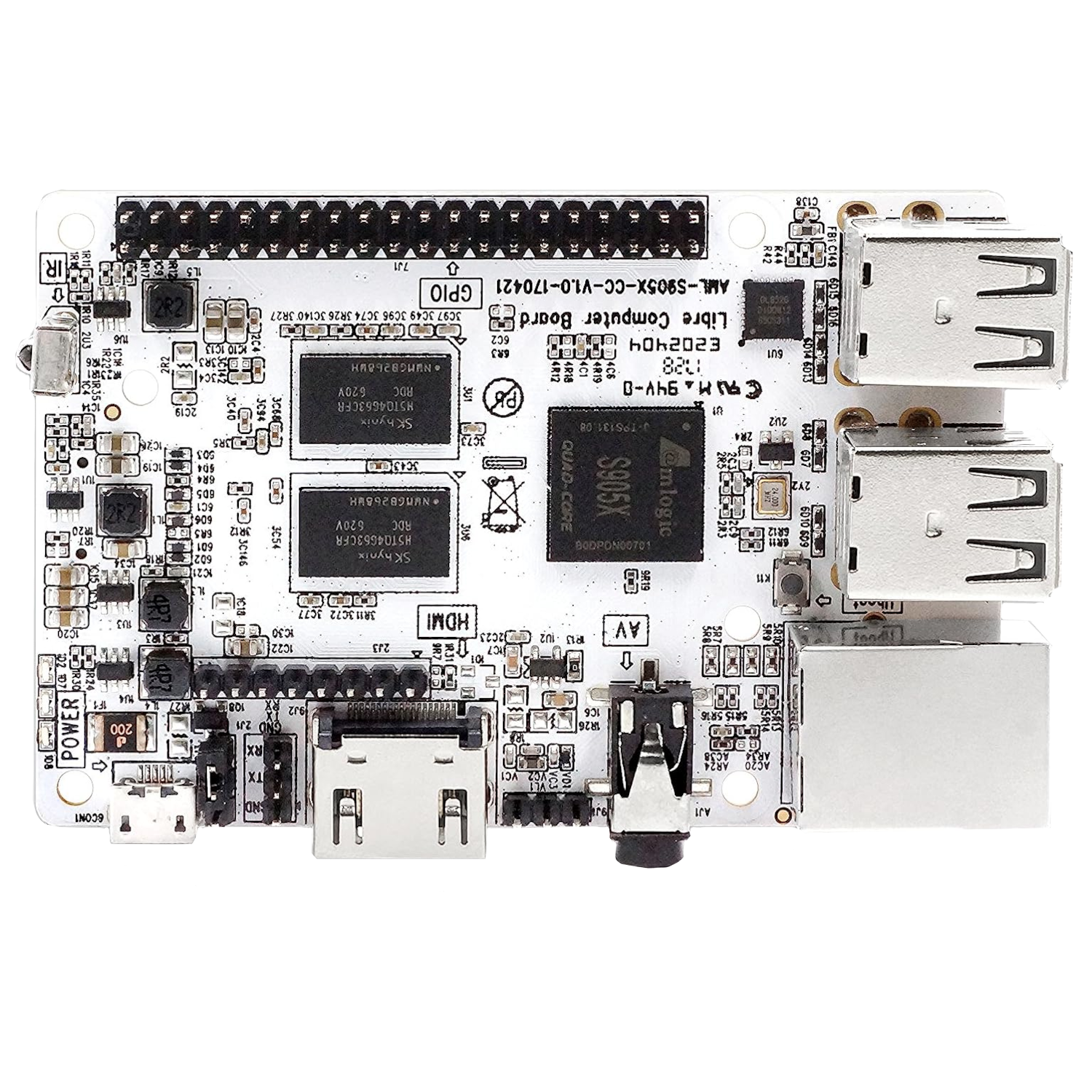
Libre Computer Le Potato
Best value
Le Potato from Libre Computer is a fantastic budget option for any makerboard project, especially when the rival Raspberry Pi 3 is out of stock.
Pros
- Renders 4K video better than the RPi 3
- Great price-to-performance ratio
- eMMC socket
Cons
- No Wi-Fi or Bluetooth built-in
- No USB 3.0 (only 2.0)
- Poor online documentation
For those looking for a value-priced SBC, the Raspberry Pi 3 is one of the most popular options. But it is quite rare to find it in stock and at MSRP. That’s why Libre Computer deserves some serious accolades for releasing Le Potato. This mid-tier SBC is designed to be an alternative to the RPi 3 and actually exceeds its competitor in some aspects.
Le Potato is powered by the same quad-core ARM Cortex-A53 CPU that is found in the RPi 3’s Broadcom BCM2837 SoC. Le Potato’s CPU runs at 1.416GHz, which is even faster than the RPi 3 at 1.2GHz. In the graphical department, Le Potato has an ARM Mali-450 GPU @ 750MHz. This is powerful enough to render 4K with a better framerate than the Raspberry Pi 3, but it isn’t quite powerful enough for emulating 3D-based gaming consoles.
Its port selection is decent but clearly dated. It has three USB 2.0 ports, which I wish were USB 3.0. It has a 100Mb Ethernet port, which I wish was 1000Mb. It has a microUSB power-in port, which I wish was USB-C. The HDMI 2.0 port with 4K HDR support, the 40-pin GPIO header, and the eMMC port are all upsides, though.
The biggest downside of Le Potato, however, is a common one for Raspberry Pi alternatives: poor documentation. Instead of a Wiki, Libre Computer only offers a collection of forum posts. It’s better than nothing, but it makes this SBC hard to recommend for learning Python or experimenting with electronic projects. Instead, it is better for cut-and-dry uses like running a Pi-Hole, VPN, or media server (Le Potato even has an IR receiver for the latter purpose). But for these uses, Le Potato is arguably better than the Raspberry Pi 3.
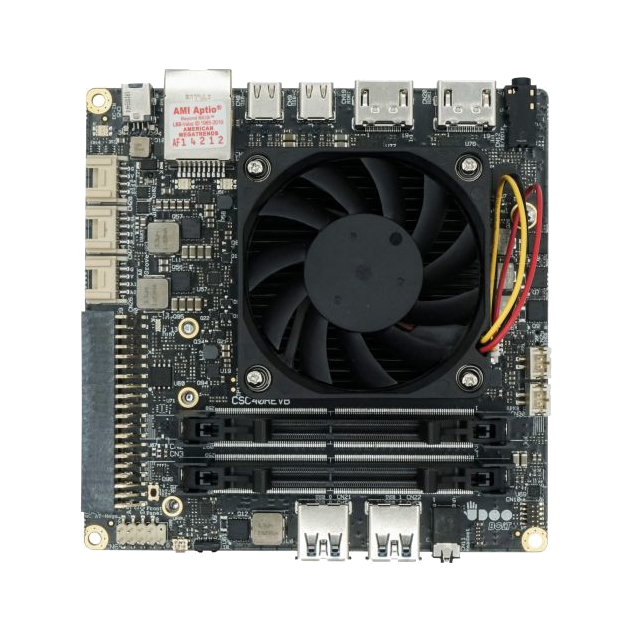
UDOO Bolt V3
Premium pick
$349 $437 Save $88
The UDOO Bolt V3 comes from a new breed of SBCs designed for ultra-CPU-intensive tasks. Its AMD Ryzen Embedded V1605B SoC rivals the performance of a full-size laptop, especially where VR, AR, and AI projects are concerned.
Pros
- Powerful CPU and GPU
- Built-in 32GB eMMC
- Lots of connectivity options
Cons
- High price tag
- Large footprint
- No Wi-Fi or Bluetooth built-in
If you saw the specs for the Raspberry Pi 5 and thought, “that’s it?â€, then the UDOO Bolt V3 is the SBC for you. This handy little device takes makerboards to the next level of performance with an AMD Ryzen Embedded V1605B SoC capable of handling tasks that are well beyond the capabilities of even the RPi 5. But this kind of performance isn’t cheap.
The UDOO Bolt V3 costs about as much as an entry-level laptop, but in all fairness, it handily outperforms any laptop in its price range. This SBC is powered by a top-of-the-line dual-core CPU with integrated AMD Radeon Vega 3 Graphics. Its rendering performance is on par with the GTX 950M and lends well to intensive uses like AI, machine learning, and emulating 3D-based game consoles. It has a 32GB eMMC 5.0 drive built-in and DD4 sockets to add up to 32GB of RAM. Just throw in a portable monitor, and you have a full-on mini-PC.
The UDOO Bolt V3 has an incredible port selection. This board includes four USB 3.1 ports, two HDMI 2.0 ports, two mini DisplayPorts, two SATA III ports, two M.2 ports, a 40-pin GPIO header, and a 3.5mm audio jack. On the networking end, it has a gigabit Ethernet port but no built-in Wi-Fi. That said, one of the two M.2 ports is E-keyed for a Wi-Fi and Bluetooth module, so this can easily be added.
With hardware like this, software compatibility is a trivial issue. This SBC can easily run any Linux distribution for X86 64-bit platforms, not to mention alternatives like Windows 10. And if that’s not enough, you can spend even more and get an UDOO Bolt V8.
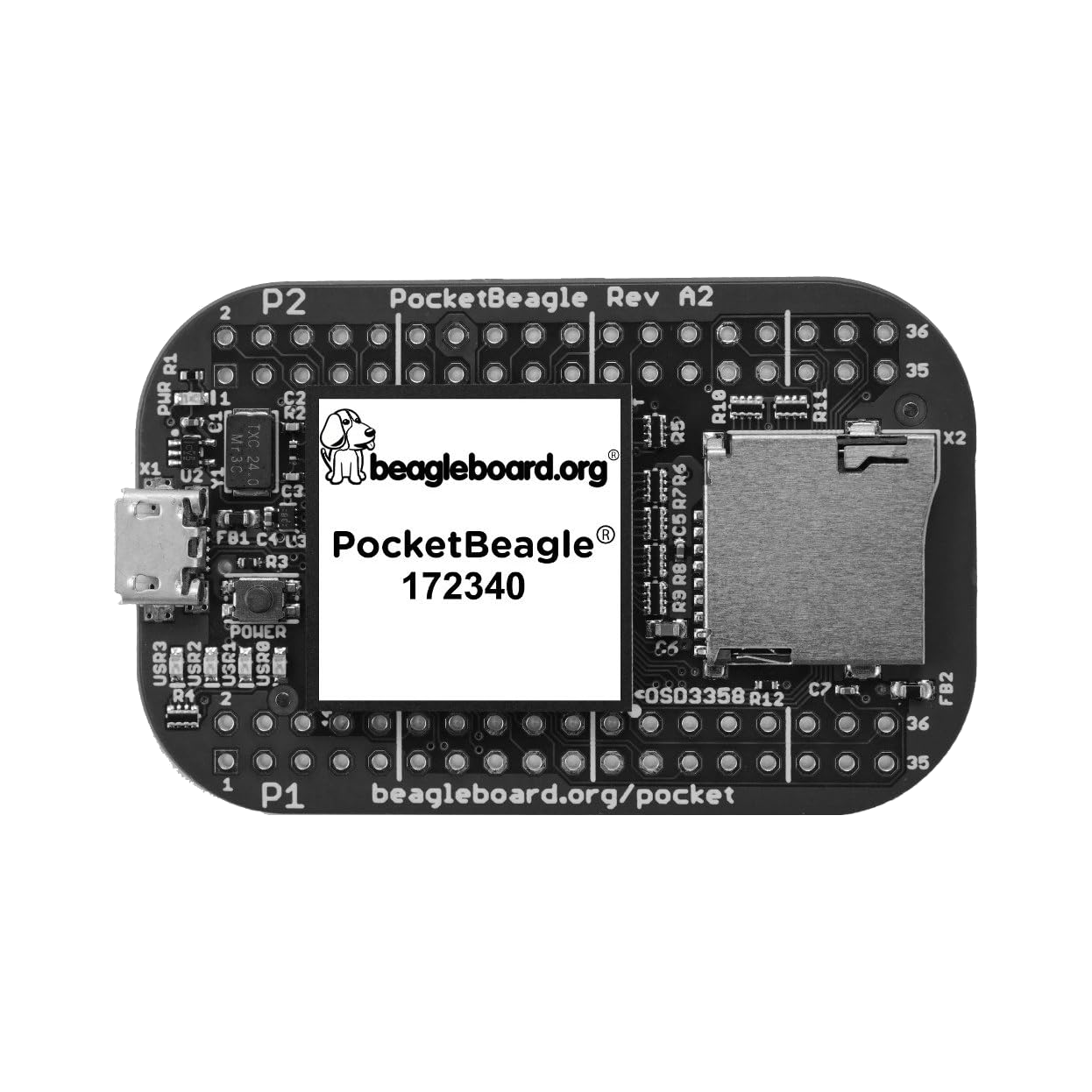
BeagleBone PocketBeagle
Most compact
The PocketBeagle is one of the most compact SBCs in the BeagleBone lineup—or the industry at large. Its snappy performance and USB-key-fob form factor make it a great option for embedding within larger tech.
Pros
- 2 programmable real-time units
- Ultra-compact form factor
- 72 expansion pin headers (unpopulated)
Cons
- Limited ports
- No Wi-Fi or Bluetooth built-in
The Raspberry Pi Zero is one of the more popular mini SBCs out there, but it is far from the best. That title may well belong to the PocketBeagle from BeagleBone. This ultra-tiny SBC is about the size of a pink classroom eraser, and yet it delivers considerable power.
Because it is so small, the PocketBeagle operates on a relatively limited hardware setup. Its only ports are an SD card slot and a USB OTG port, which allow it to act as both a host and a peripheral. Aside from that, it has 72 unpopulated expansion pin headers, which allow it to connect to many accessories once you solder on the appropriate electrical components. Comparatively, the RPZ has a smaller 40-pin GPIO header. All of these elements make this a great option for embedded use within a larger piece of tech, like a 3D printer, drone, or laser cutter.
The processing capabilities of the PocketBeagle are scaled down relative to full-size SBCs, but it is still no slouch within its own weight class. The PocketBeagle is powered by the Octavo System OSD3359-SM SiP module. This includes a 1GHz Texas Instruments Sitara AM3358 ARM Cortex-A8 SoC and a 3D-ready PowerVR SGX530 GPU. It also has 512MB of DDR3 RAM and 4KB of EEPROM.
One unique feature of this SiP is a 2x 32-bit 200MHz PRU (programmable real-time unit), which is extra useful for the aforementioned low-latency, real-time applications like 3D printing, laser cutting, and controlling drones. While this SBC serves a much narrower function than other options, it is still a standout choice for users looking to explore this space.
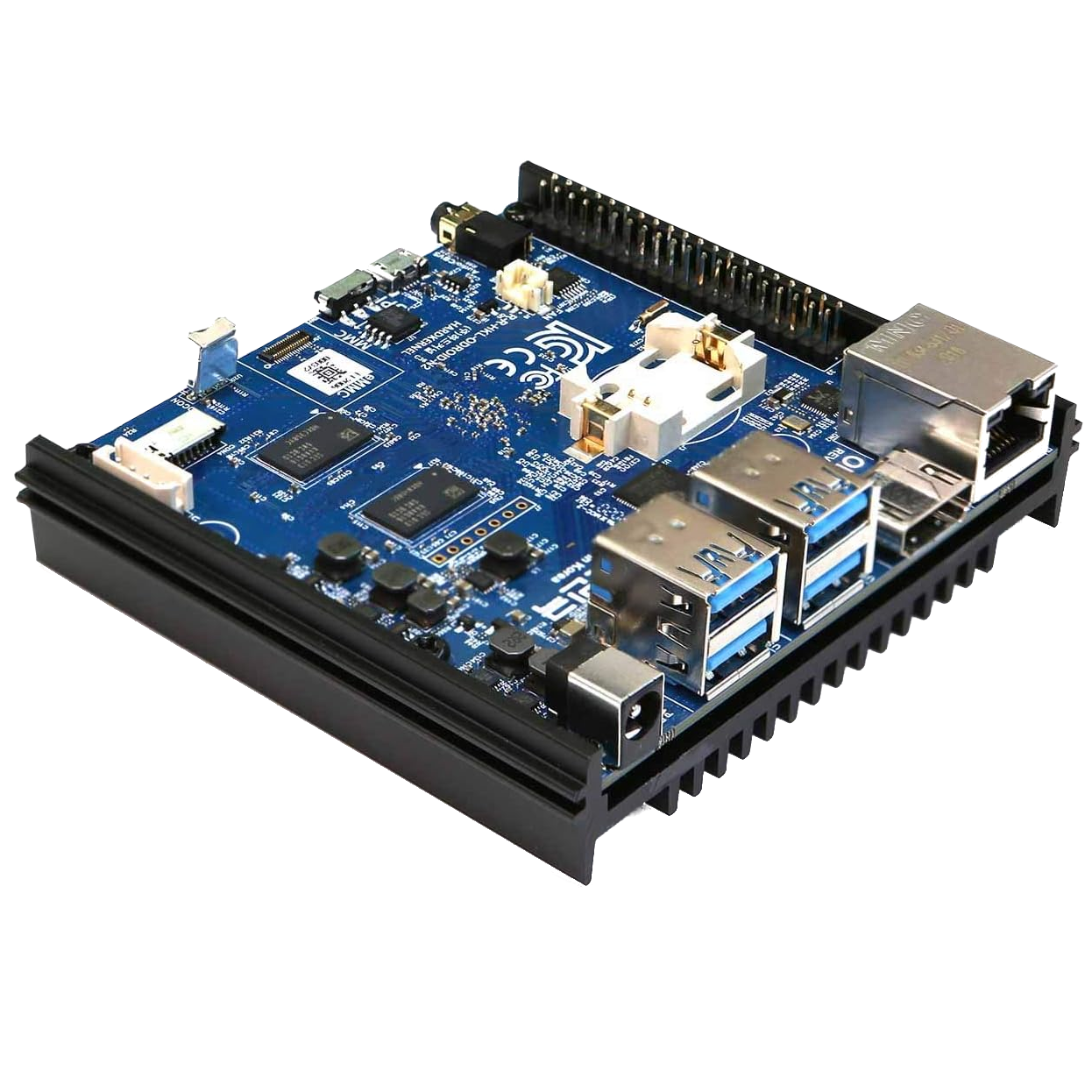
Odroid N2+
Best for media
$112 $120 Save $8
The Odroid N2+ rivals the popular Raspberry Pi 4 in a variety of uses. And it actually exceeds the RPi 4 in terms of media playback, thanks to support for some key playback features.
Pros
- Supports 4K with HDR10 and HLG
- Great price-to-performance ratio
- eMMC socket
Cons
- Some software compatibility issues
- No built-in storage
- Poor documentation
At a cursory glance, the Odroid N2+ may seem like a run-of-the-mill Raspberry Pi 4 upgrade. However, its feature set goes surprisingly deep, especially where media playback is concerned. On top of that, it has an overall great price-to-performance ratio.
This SBC is powered by the hexa-core Amlogic S922X SoC, which is equipped with one quad-core ARM Cortex-A73 and one dual-core ARM Cortex-A53 CPU. It also has an ARM Mali-G52 GPU, which is powerful enough to run Nintendo Gamecube games via the Dolphin Emulator software. Crucially, this SBC also supports key media playback features such as 4K output with HDR10 and HLG support, automatic frame rate switching, and dynamic range matching. It also supports audio passthrough for common digital audio formats like Dolby Atmos and DTS:X.
The Odroid N2+ comes with either 2GB or 4GB of RAM and no built-in storage (though it has an eMMC socket and a microSD port to add some). It has one Gigabit Ethernet port, two USB 3.0 ports, and an HDMI 2.0 port. It also has a Pi-style 40-pin GPIO header. It has a decently organized wiki for support, but it lacks the same large community that the Raspberry Pi 4 has. However, if you don’t need this level of support, then this remains a great option for various small-scale projects, both media-related and beyond.
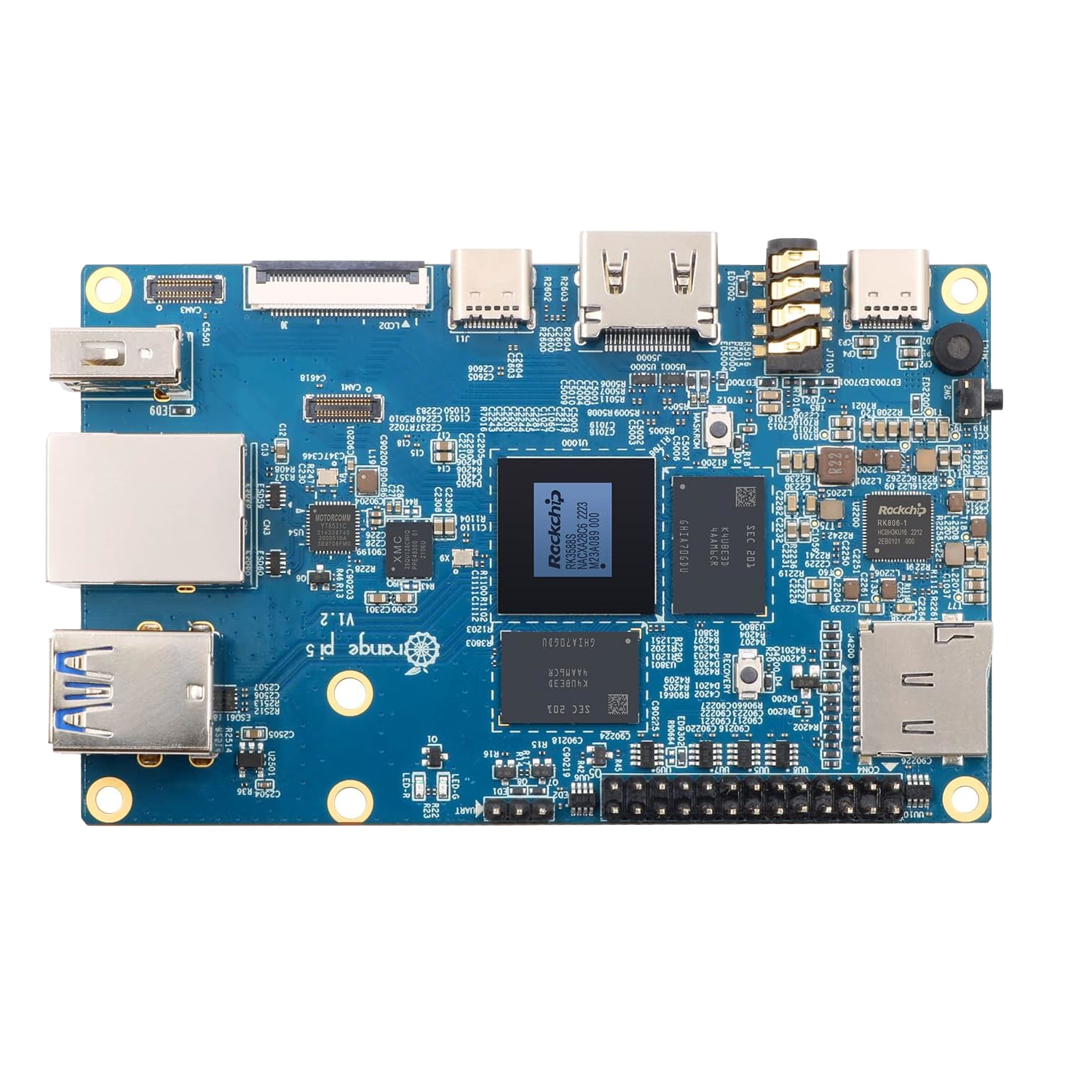
Orange Pi 5
Best for cloud computing
The Orange Pi 5 goes above and beyond the Raspberry Pi 5 in terms of performance, but not in terms of documentation and support. Those willing to make this tradeoff will be rewarded with a highly powerful and flexible SBC.
Pros
- Powerful CPU and GPU
- 16MB QSPI Nor FLASH built-in
- Lots of connectivity options
Cons
- Some software compatibility issues
- No Wi-Fi or Bluetooth built-in
- Poor documentation
Considering that the Orange Pi 5 was released well before the Raspberry Pi 5, this snappy little SBC raises a key question: who is imitating who here? In truth, neither device really imitated the other, but Orange Pi 5 has made for a fairly clean RPi 5 killer all the same. For just a bit more than the RPi 5, you can get a significantly more powerful SBC, and every extra bit of power counts when you delve into CPU-intensive processes like interacting with cloud resources or running machine learning modules.
The Orange Pi 5 is powered by the Rockchip RK3588S SoC, which combines two quad-core A76 and A55 units for an octa-core configuration that clocks in at up to 2.4GHz. It also has an ARM Mali-G610 GPU that can output 8K video and a built-in NPU (Neural Processing Unit). It comes with either 4GB/8GB/16GB of RAM and has 16MB of QSPI Nor FLASH built-in.
In terms of ports, this device has one USB 3.0 port, one USB 2.0 port, and one USB-C 3.1 port. For video, it has an HDMI 2.1 port and a DP1.4. You can also add a microSD slot, an M.2 M-KEY Socket, a gigabit Ethernet port, and a 3-pin debug serial port (UART) to the tally. Finally, the board has a 26-pin GPIO interface for further hardware expansion.
The documentation for the Orange Pi 5 is decent, especially compared to some of the other options listed, but still not quite up to par with the Raspberry Pi 5. However, for experienced users, this is an acceptable tradeoff for the added power. And that remains true even if you factor in the slightly higher price.

Arduino Uno REV3
Best for learning
$28 $32 Save $4
The Arduino Uno REV3 is an entry-level microcontroller that is great for learning the Arduino programming language. New users will be able to complete their first programming projects in minutes not hours, making it a great alternative to the Raspberry Pi Pico.
Pros
- Vast documentation
- Easy to use
- Low price tag
Cons
- Low computing power
- No internet support
Because of the Raspberry Pi’s vast online community, it is challenging to find a solid alternative for learning in the microprocessor space. However, there are still viable options on the microcontroller end of things, like the Arduino Uno REV3. This product compares closely to the Raspberry Pi Pico, a popular microcontroller for learning the ropes of designing embedded systems and controlling hardware.
The REV3 is powered by an ATmega328P 16 MHz SoC, which isn’t quite competitive with ARM-based processors but is still well-suited for the basic tasks for which you might use this device. Keep in mind that the REV3 does not need an OS installed locally and instead will typically run just one program at once. So, instead of focusing on the specs for this device, it is more helpful to examine some of the peripherals on the board. These include two 8-bit timers/counters, one 16-bit timer/counter, one USART, one controller SPI, one dual mode controller/peripheral I2C, and one Analog Comparator, among others.
You can use this board as the baseline for a number of beginner projects. You can connect an LED to one of the digital pins and write a program to make it blink on and off. You can connect a sound sensor and a buzzer and then make a threshold of sound trigger the buzzer. You can connect a temperature sensor and a fan and program a temperature-controlled fan. These are all great ways to develop experience with the Arduino platform. Admittedly, the skills you would learn from a Raspberry Pi are more transferable, but there is nothing wrong with starting on an Arduino, especially if the Raspberry Pi Pico is out of stock, as it so often is.
The best Raspberry Pi alternatives: the bottom line
While Raspberry Pi products make up a major portion of the maker board space, they are far from the only option, no matter how niche of a project you might be cooking up. There are plenty of souped-up RPi clones that can outperform their originals, and most notable among them is the Banana Pi BPI-M5. The BPI-M5 is a straight upgrade in the price-to-performance department, even if it may have some software incompatibilities that the RPi 4 wouldn’t.
You can also look for Raspberry Pi alternatives to save some money, as is the case with the value-priced Le Potato. It is both cheaper and more commonly available than the Raspberry Pi 3, making it a better choice for low-end reliability. Additionally, some brands go above and beyond the scope of the RPi product line to specialize in CPU-intensive applications like ML and AI. The UDOO Bolt V3 stands in a class of its own for such applications. The list of alternatives only grows from here. Furthermore, the more people that migrate over to alternative platforms, the more support these platforms will get. And that’s healthier for the whole industry.
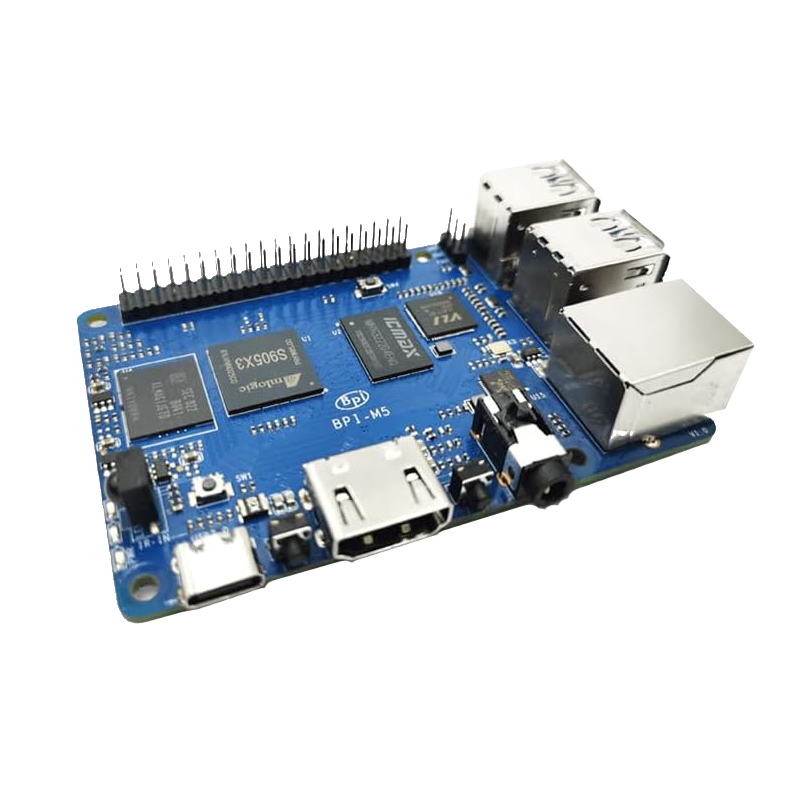
Banana Pi BPI-M5
Best overall
The Banana Pi BPI-M5 proves that Raspberry Pi isn’t the only brand pushing single-board computers forward. If it had a user base even half the size of the RPi community, it could easily overtake Raspberry Pi as the de facto brand for maker boards.
** (Disclaimer: This video content is intended for educational and informational purposes only) **
More...

